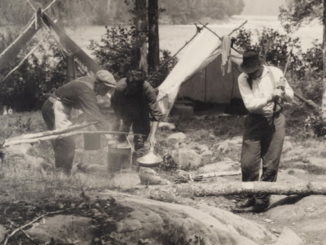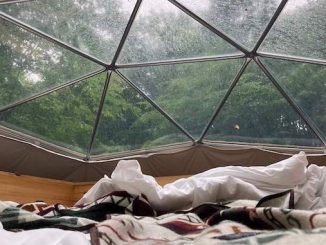Before I even packed the car, I wanted to get a sense of where I was headed. Bon Echo Provincial Park is one of Ontario’s real gems, officially opened as a park back in the 1960s. It covers thousands of hectares of protected wilderness near the little village of Cloyne, about a three-hour drive northeast of Toronto. It’s roughly the same distance from Ottawa too, making it a popular getaway for city dwellers from both directions.
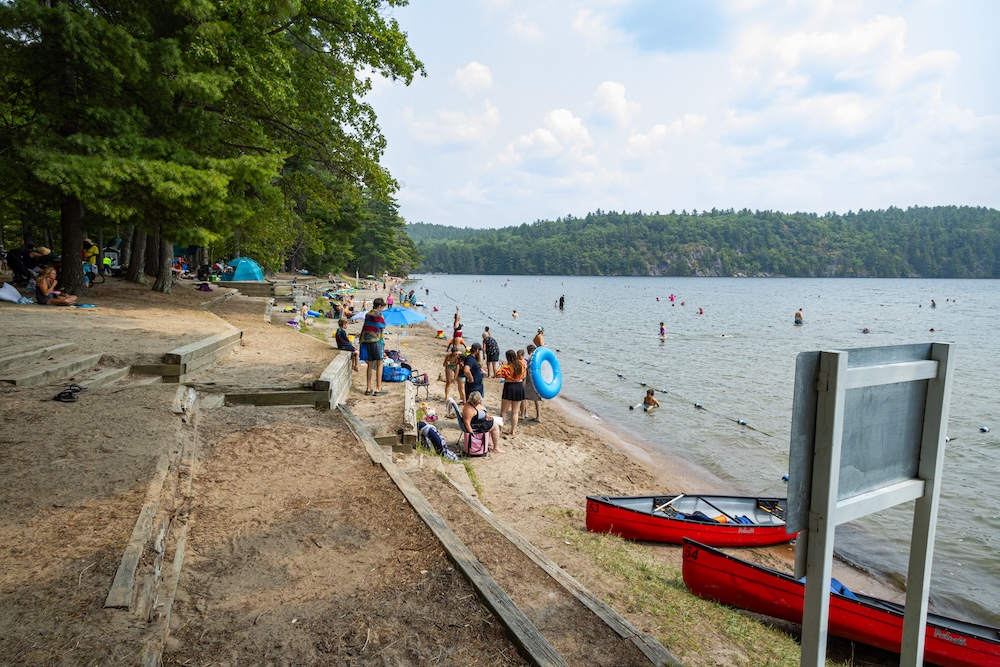
The park’s star attraction is Mazinaw Rock, a massive granite cliff that towers 100 metres above Mazinaw Lake and stretches for more than a kilometre and a half. The name “Bon Echo” comes from the way sound bounces dramatically off the cliff face. Even more powerful than the echo are the hundreds of Indigenous pictographs painted in red ochre on the rock. It’s Canada’s largest visible collection, and seeing them up close feels like stepping into living history.
On the Road: From Cityscape to Woodland
Once I had my background research done, it was time to hit the road. I packed up my camping gear, snacks, and supplies into the Mazda CX-5 I’d borrowed from the press fleet. For a trip like this, it was a great choice—comfortable on the highway, roomy enough for bulky equipment, and with just the right tech to make the hours roll by.
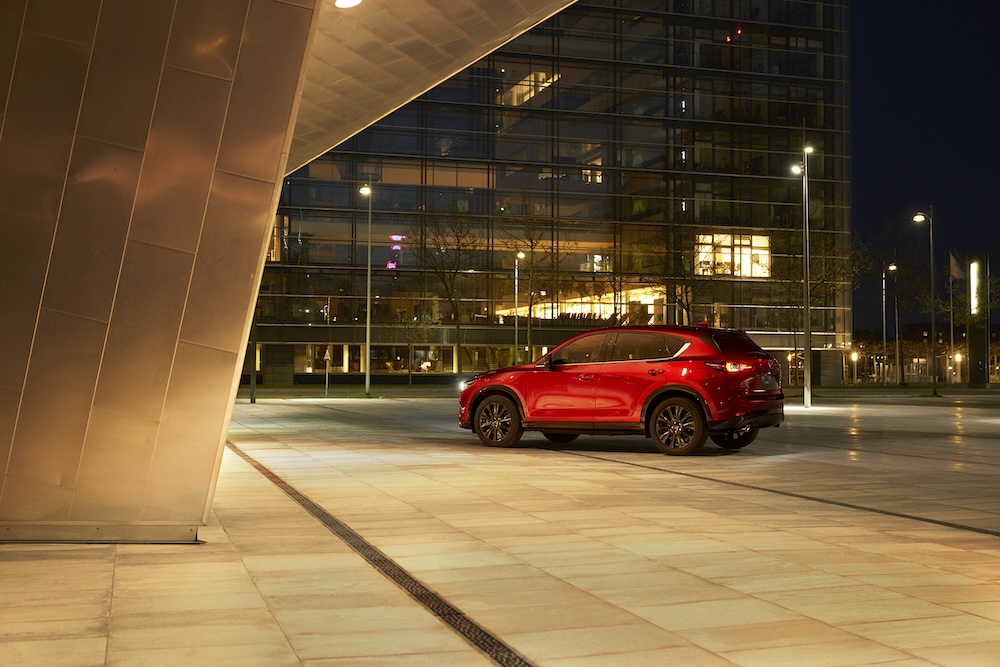
The drive itself was classic Ontario. Leaving Toronto, I cut past Peterborough and rolled through stretches of farmland, gentle hills, and pine forests that grew taller and denser the farther north I went. There’s a point on the drive when you feel the pace of the city slip away, and by the time I reached Cloyne, that shift was complete. The air felt clearer, the roads quieter, and the anticipation of campfires and star-filled skies started to take over.
Arriving at Bon Echo
Pulling into Bon Echo, I was immediately struck by the sight of Mazinaw Rock. Photos don’t prepare you for the scale of it—a sheer wall of granite rising out of the lake like some ancient fortress. Paddling near its base, your voice comes back to you, echoing off the stone, almost as if the land itself is answering. Then there are the pictographs: red ochre markings of animals, shapes, and symbols left centuries ago. Standing before them, I felt less like a camper arriving at a park and more like a visitor to something sacred.
What Bon Echo Has to Offer
There’s no shortage of ways to experience the park. Canoes, kayaks, and paddleboards are available to rent, and they’re the best way to see the cliff and its pictographs up close. If you’d rather stay dry, the Mugwump Ferry offers a guided ride across the lake. Adventurous paddlers can take on the 21-kilometre Kishkebus canoe route, complete with a portage through backcountry waterways.
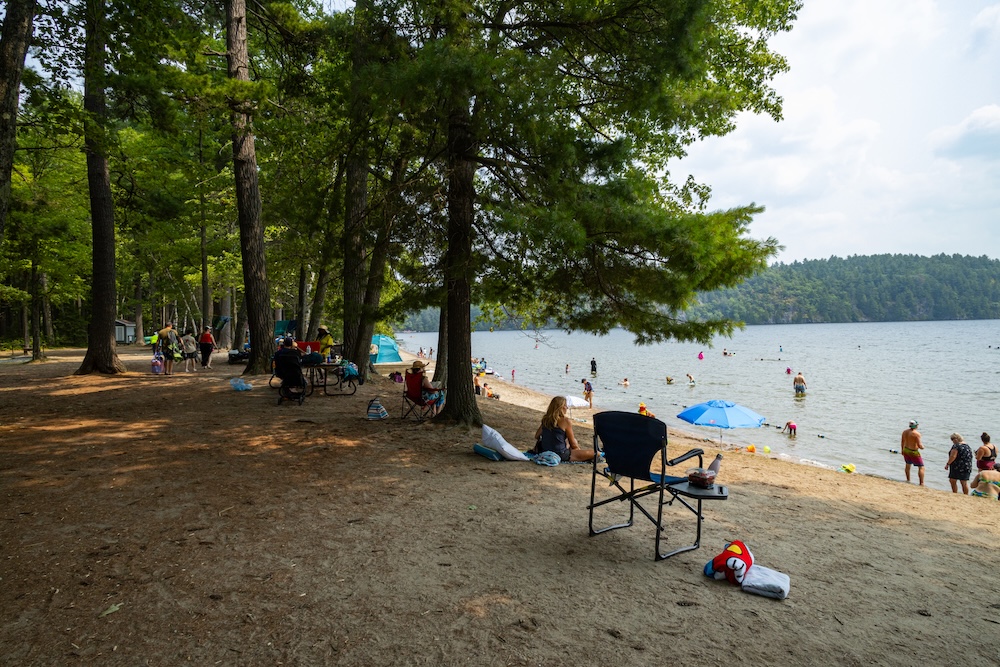
The hiking trails are just as varied. The Cliff-Top Trail rewards the climb with sweeping views over Mazinaw Rock and the lake, while the Abes and Essens Trail offers loops up to 17 kilometres for those ready to really test themselves. For something gentler, there are family-friendly walks like the Shield Trail and the High Pines Trail.
Camping is another highlight. Bon Echo has more than 400 car campsites, some with electricity and full amenities, plus backcountry sites for those who want to rough it. Walk-in sites offer a middle ground, while yurts, cabins, and the park’s “Cabin on the Hill” provide cozy shelter for anyone seeking comfort without giving up that wilderness setting.
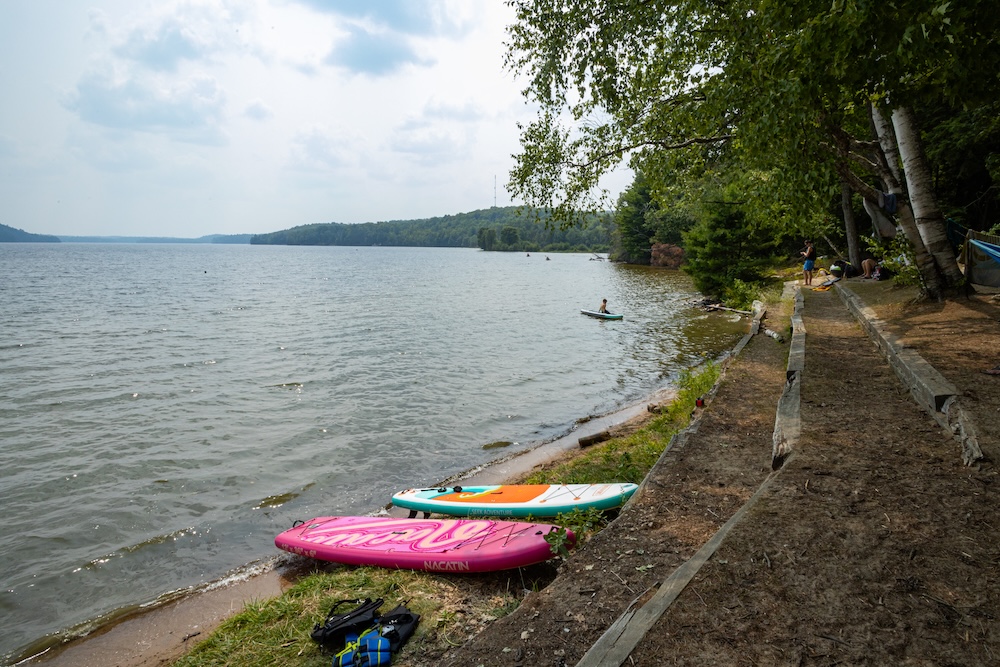
On hot days, there are three beaches to choose from. South Beach is grassy and shallow—perfect for little kids. Main Beach is sandy and popular, with picnic tables and grills for a full day by the water. North Beach is quieter, with shade and views of Mazinaw Rock.
Beyond the obvious, Bon Echo also offers rock climbing (organized by the Alpine Club of Canada), discovery programs for kids and families, and a visitor centre with exhibits that trace the park’s history, including the days when a grand inn once stood here. Wildlife is abundant, too—I spotted loons and woodpeckers on my trip, and birdwatchers can find more than 200 species in the area.
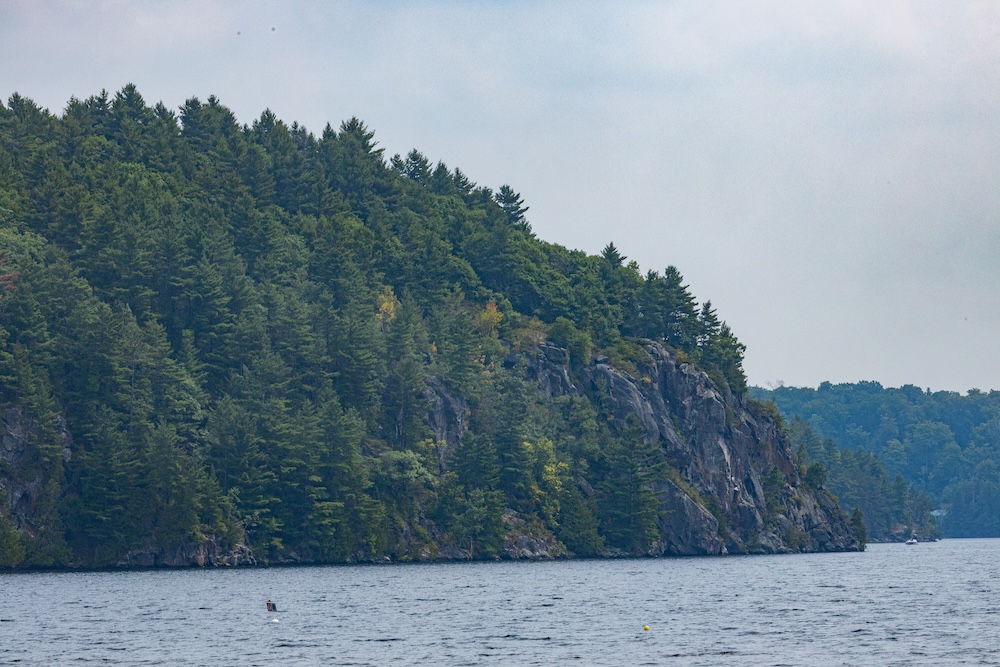
Quick Tips I Learned
-
Book early: Sites, cabins, and yurts fill quickly in peak season.
-
Respect the pictographs: They’re sacred, so admire without touching.
-
Be prepared: Trails, especially backcountry ones, can be rugged—proper footwear and water are musts.
-
Arrive early: Beaches and picnic areas fill up fast on weekends.
-
Check fire rules: Fire bans are sometimes in effect, so plan your meals accordingly.



